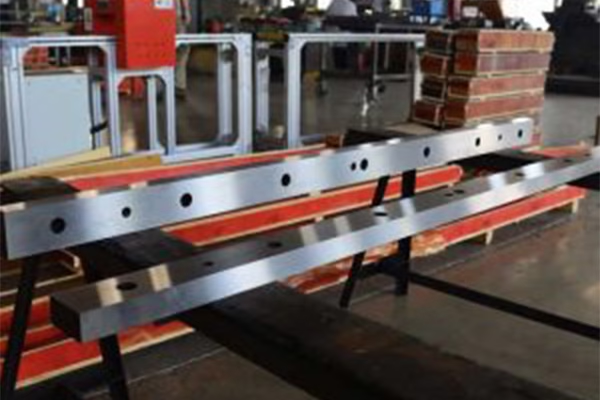- Packaging Printing Blade Series
- Inlaid Steel Blade Series
- Tungsten Inlaid Steel Blade Series
- Pneumatic Tool Holder And Slitting Upper And Lower Tool Series
- Hot Sealing Knife Hot Cutting Knife Series
- Hard Alloy Blade Series
- Lithium Battery Blade Series
- PaperMachinery Blade Series
- Metallurgical Blade Series
- Special Shaped Blade Series
- Coating Blade Series
- Shearing Machine Bending Machine Series
History and Future Trends of Cutting Tools
History and Future Trends of Cutting Tools

Cutting tools stand as both witness and catalyst in the development of human industrial civilization. From the stone polishing of primitive societies to modern precision manufacturing, this “blade” has continuously evolved alongside technological progress. As early as the 28th century BCE, ancient Chinese craftsmen began using copper tools, and by the Warring States period, they had mastered carburization techniques that significantly enhanced tool performance. Though simple by today’s standards, these ancient tools laid the foundation for subsequent advancements in cutting technology.
The wave of the 18th century Industrial Revolution brought transformative changes to cutting tool technology. In 1783, the French invented the milling cutter, followed by British development of taps and dies in 1792 – innovations that dramatically propelled mechanical manufacturing forward. With advancements in materials science, alloy tool steel emerged in 1868, high-speed steel was born in 1898, and cemented carbide was successfully developed in 1923. Each material breakthrough multiplied cutting efficiency exponentially. The advent of cemented carbide particularly revolutionized the field, increasing cutting speeds from an initial 5 meters per minute to dozens of meters while achieving quantum leaps in machining precision.
Modern cutting tools have developed into a vast and sophisticated system. By processing method, they can be categorized into external cylindrical machining tools (lathe tools, milling cutters, drills), threading tools (taps, dies), and gear-cutting tools (hobs, pinion cutters). Structurally, the evolution from traditional solid tools to indexable inserts has not only improved machining efficiency but also reduced production costs. Material-wise, beyond conventional high-speed steel and cemented carbide, the application of ultra-hard materials like ceramics, cubic boron nitride, and polycrystalline diamond has enabled tools to handle various challenging machining tasks. Breakthroughs in coating technology have multiplied tool lifespan several times over – TiN and TiCN coatings act like “protective armor,” significantly enhancing wear resistance.
Currently, cutting tool technology is advancing rapidly toward intelligent and precision-oriented development. New nano-coating materials continue to emerge, smart tools now integrate sensors for real-time monitoring, and 3D printing technology offers novel approaches for manufacturing complex tools. These innovations not only improve machining efficiency and quality but also drive the transformation and upgrading of the entire manufacturing sector. In a sense, a nation’s level of cutting tool technology directly reflects its manufacturing capability. With each evolution of this “industrial blade,” it helps create a better future for humanity.
Facebook
Twitter
LinkedIn
Table of Contents
Related Post
The Most Comprehensive Classification of Cutting Tools
(I) Classification of Cutting Tools
Cutting tools are typically categorized by processing method and...
Classification and Compatibility Matching of Tool Materials and Workpiece Materials
In the field of industrial manufacturing and machining, cutting tools are defined as instruments that...
Our Company
Caleseiko stands as a global leader in mechanical blade manufacturing, renowned for its unwavering commitment to quality, innovation, and customer satisfaction. With decades of expertise, the company delivers cutting-edge blades that excel in precision, durability, and performance across diverse industries. From advanced materials to state-of-the-art production techniques, Caleseiko consistently sets new benchmarks in the industry. Their dedication to excellence and tailored solutions makes them the trusted partner for businesses worldwide.
Caleseiko: The Gold Standard in Blade Manufacturing
Innovating the Future of Cutting Technology
Precision Engineered for Unmatched Performance
Trusted by Industries Worldwide for Decades
Where Quality Meets Cutting-Edge Innovation
Caleseiko: Your Partner in Precision and Reliability
